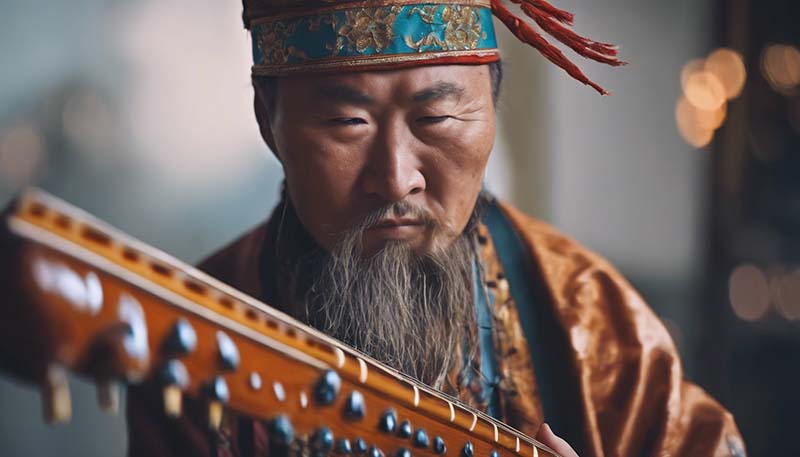The Role of the Morin Khuur in Mongolian Music
The Role of the Morin Khuur in Mongolian Music
Introduction
The Morin Khuur, often referred to as the "horsehead fiddle" or "horsehead violin," is an iconic instrument in Mongolian music. It is not only a musical instrument but also a symbol of Mongolian cultural identity. The Morin Khuur has a unique place in the heart of the Mongolian people, and its role in Mongolian music is multifaceted, encompassing traditional folklore, ceremonial music, and contemporary compositions. This article aims to explore the various roles of the Morin Khuur in Mongolian music, its cultural significance, and its impact on the development of Mongolian musical traditions.
Historical Context
The Morin Khuur has a long and storied history in Mongolia, dating back to the 12th century. It is believed to have been developed during the time of Genghis Khan and has since been an integral part of Mongolian culture. The instrument is named after its distinctive horsehead-shaped scroll, which is said to represent the spirit of the horse, an animal of great importance in Mongolian life.
Cultural Significance
The horse is a symbol of freedom, strength, and nobility in Mongolian culture, and the Morin Khuur embodies these qualities. The instrument is often associated with shamanic rituals and is believed to have the power to connect the human world with the spiritual realm. The Morin Khuur's role in Mongolian music is not just as a vehicle for melody but also as a conduit for spiritual expression and cultural heritage.
Advertisement
Traditional Music and Folklore
The Morin Khuur plays a central role in traditional Mongolian music, particularly in the performance of long songs, throat singing, and narrative tales. These musical forms are deeply rooted in Mongolian history and are often accompanied by the Morin Khuur, which provides a rich, resonant backdrop to the vocals. The instrument's ability to mimic the human voice and express a wide range of emotions makes it an ideal accompaniment for these traditional genres.
Throat Singing and the Morin Khuur
One of the most unique aspects of Mongolian music is throat singing, or "hoomii," a technique where a single singer produces multiple pitches simultaneously. The Morin Khuur is often used to support and enhance the complex harmonies created by throat singers. The drone-like quality of the instrument complements the overtones produced by the singer, creating a mesmerizing and ethereal sound.
Ceremonial Music
The Morin Khuur is also an essential component of ceremonial music in Mongolia. It is played during important events such as weddings, funerals, and religious ceremonies. The instrument's haunting and evocative tones are thought to carry the prayers and intentions of the participants to the spiritual realm.
National Anthem and Patriotic Songs
The Morin Khuur is prominently featured in the performance of the Mongolian national anthem and other patriotic songs. Its presence in these compositions serves to reinforce a sense of national identity and pride among the Mongolian people.
Contemporary Music
In recent years, the Morin Khuur has been incorporated into contemporary Mongolian music, including pop, rock, and jazz. This has led to a fusion of traditional and modern styles, creating a unique sound that is both familiar and innovative. The instrument's versatility and adaptability have allowed it to maintain its relevance in the ever-evolving landscape of Mongolian music.
International Recognition
The Morin Khuur has also gained international recognition, with musicians and ensembles from Mongolia performing on the world stage. This exposure has led to a greater appreciation of the instrument's unique qualities and its role in Mongolian music and culture.
Conclusion
The Morin Khuur is more than just an instrument; it is a symbol of Mongolian culture and a vessel for the expression of the nation's musical heritage. Its role in traditional and contemporary music, as well as its significance in ceremonial and patriotic contexts, underscores its importance in the musical tapestry of Mongolia. As the Morin Khuur continues to evolve and adapt to new musical styles, it remains a powerful and enduring symbol of Mongolian identity.
